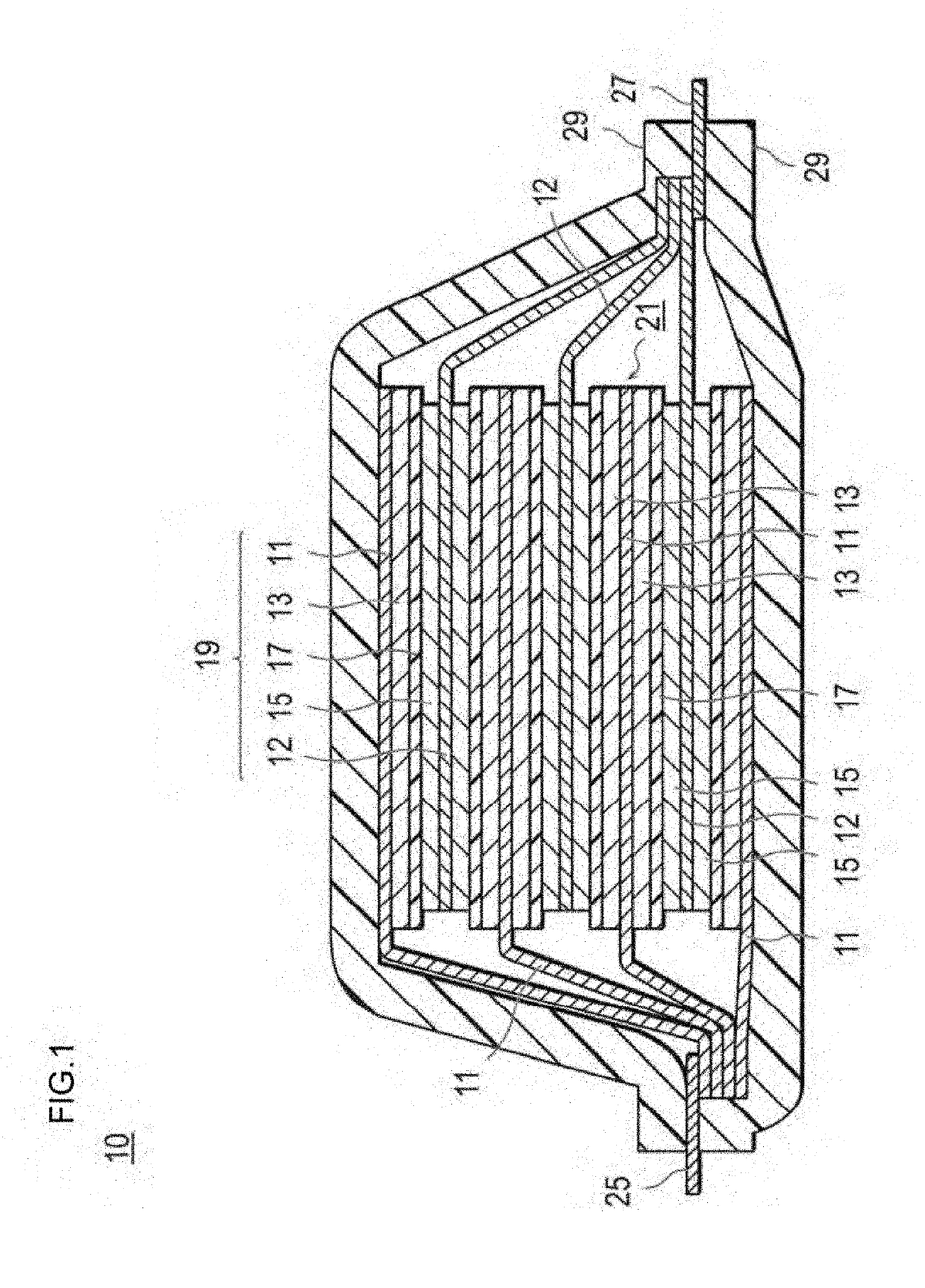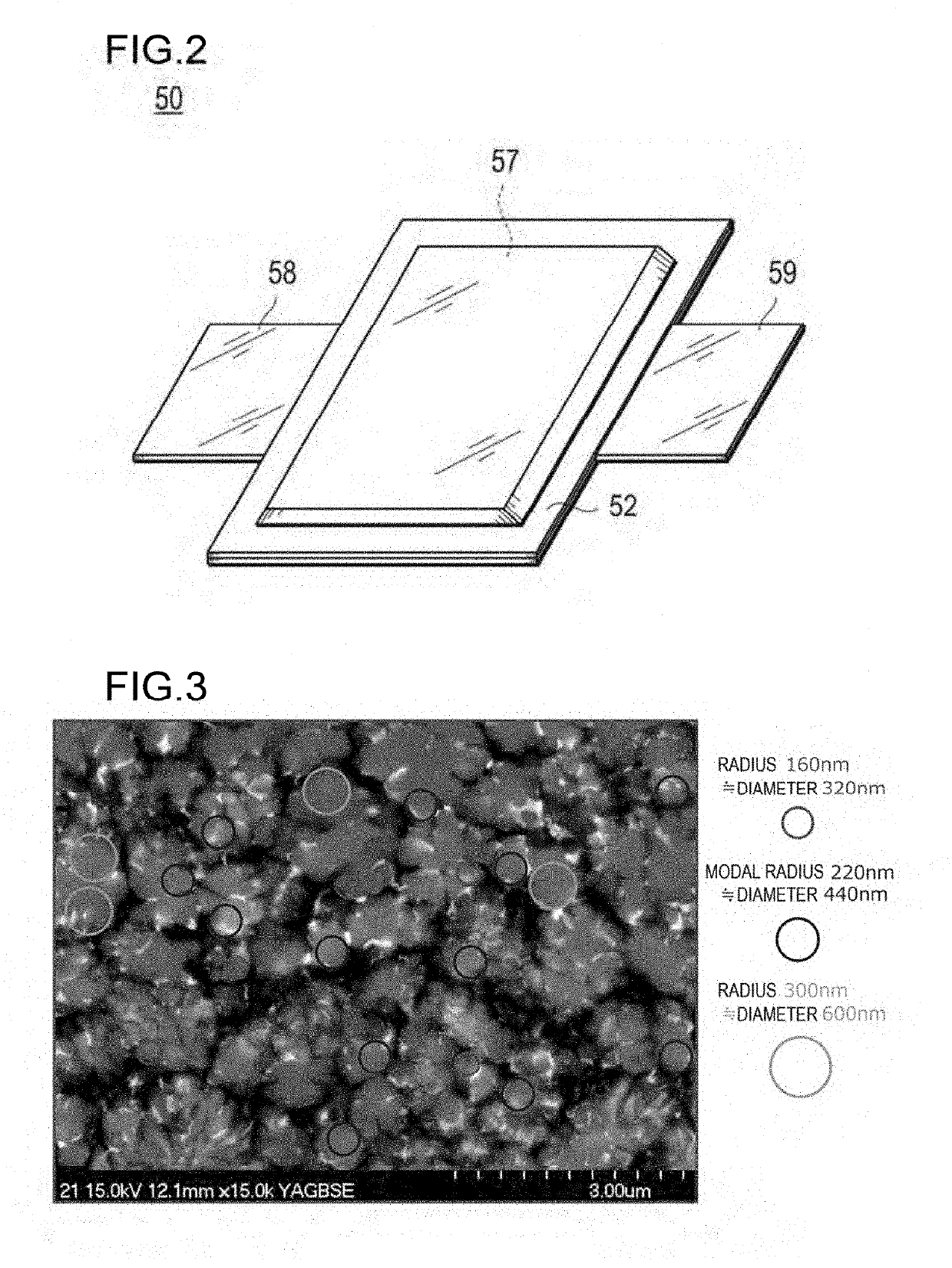Negative Electrode Active Material for Electrical Device and Electrical Device Using the Same
a technology of active materials and negative electrodes, which is applied in the direction of negative electrodes, electrochemical generators, cell components, etc., can solve the problems of large expansion and shrinkage of negative electrodes, difficult to obtain capacity and energy density, and difficult to obtain the capacity and energy density of 372 mah/g or more, etc., to achieve the enhancement of the forming ability of the amorphous (amorphous or low crystalline si) phase, the effect of decreasing the modal radius
- Summary
- Abstract
- Description
- Claims
- Application Information
AI Technical Summary
Benefits of technology
Problems solved by technology
Method used
Image
Examples
example 1
[0384][Fabrication of Silicon-Containing Alloy]
[0385]An alloy seed was set to Si60.0Sn8.1Ti30.1Al1.8 (Si 60.0% by mass-Sn 8.1% by mass-Ti 30.1% by mass-Al 1.8% by mass) and fabricated by a liquid quenching solidification method. Details will be described below. Specifically, an ingot alloy of a silicon alloy (Si 60.0% by mass, Sn 8.1% by mass, Ti 30.1% by mass, and Al 1.8% by mass) was fabricated using a high purity metal Si ingot (5 N), a high purity Sn plate (3 N), a high purity Ti wire (3 N), and a high purity Al shot (3 N) by an arc melting method. The ingot alloy was coarsely pulverized to a diameter of about 2 mm so as to be easily introduced into a quartz nozzle.
[0386]Subsequently, a ribbon-like alloy=rapidly quenched ribbon (ribbon) alloy was fabricated as a Si-containing alloy using the coarsely pulverized powder of the ingot alloy as a mother alloy by a liquid quenching solidification method. Specifically, the mother alloy of Si60.0Sn8.1Ti30.1Al1.8 was placed in a quartz n...
example 2
[0393]A negative electrode active material, a negative electrode, and a lithium ion secondary battery (coin cell) were fabricated by the same method as in Example 1 described above except that the alloy seed was changed to Si64.7Sn5.0Ti29.9Al0.4 (Si 64.7% by mass-Sn 5.0% by mass-Ti 29.9% by mass-Al 0.4% by mass). The thickness of the ribbon-like alloy (rapidly quenched ribbon alloy) thus obtained was 21.5 μm. In addition, the average particle diameter D50 of the Si-containing alloy (negative electrode active material) powder thus obtained was 5.0 μm and D90 was 16.7 μm.
example 3
[0394]A negative electrode active material, a negative electrode, and a lithium ion secondary battery (coin cell) were fabricated by the same method as in Example 1 described above except that the alloy seed was changed to Si64.0Sn4.9Ti30.0Al1.1 (Si 64.0% by mass-Sn 4.9% by mass-Ti 30.0% by mass-Al 1.1% by mass). The thickness of the ribbon-like alloy (rapidly quenched ribbon alloy) thus obtained was 19.5 μm. In addition, the average particle diameter D50 of the Si-containing alloy (negative electrode active material) powder thus obtained was 4.5 μm and D90 was 16.9 μm.
PUM
| Property | Measurement | Unit |
|---|---|---|
| composition | aaaaa | aaaaa |
| microstructure | aaaaa | aaaaa |
| modal radius | aaaaa | aaaaa |
Abstract
Description
Claims
Application Information
 Login to View More
Login to View More - R&D
- Intellectual Property
- Life Sciences
- Materials
- Tech Scout
- Unparalleled Data Quality
- Higher Quality Content
- 60% Fewer Hallucinations
Browse by: Latest US Patents, China's latest patents, Technical Efficacy Thesaurus, Application Domain, Technology Topic, Popular Technical Reports.
© 2025 PatSnap. All rights reserved.Legal|Privacy policy|Modern Slavery Act Transparency Statement|Sitemap|About US| Contact US: help@patsnap.com



